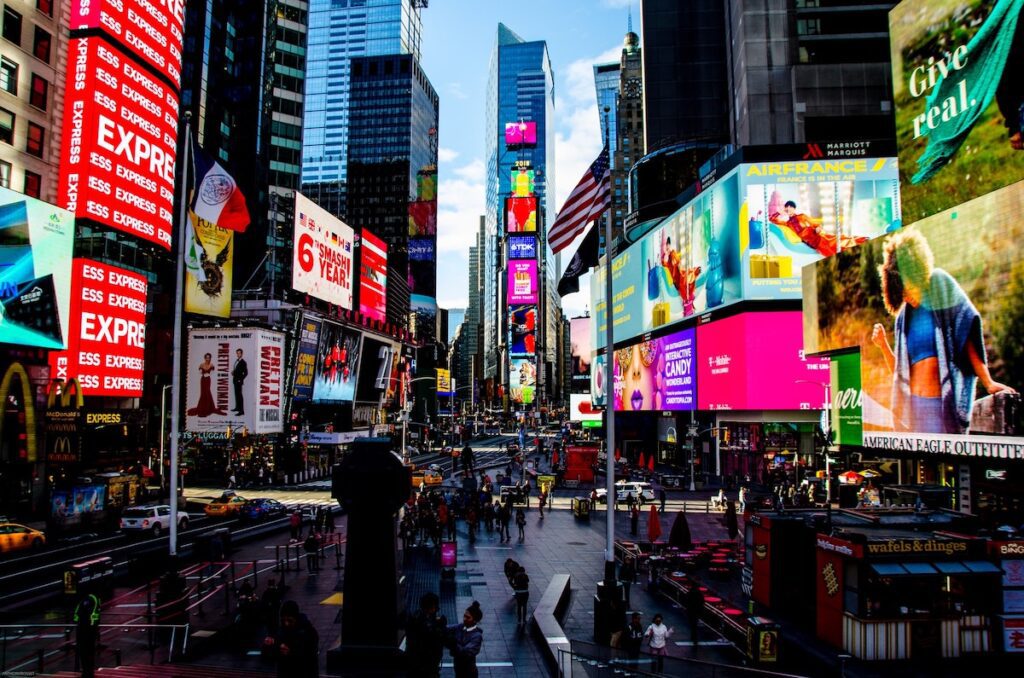
With more than 55% of the world’s population staying in the cities, governments and tech-based companies continue investing in technological advancements in urban spaces. This explains why smart city projects have popped up worldwide, with pioneers hoping to find alternative solutions to longstanding urban problems. Among the solutions include streetlights with traffic situation analytics, maps indicating available parking spaces, and digital signage.
Digital signage is probably a common feature in most of the world’s largest cities, providing essential information to locals and tourists. Below is the importance of digital billboards or signage in smart cities.
1. Improves Communication
The atmosphere in cities is different. It’s very fast paced and there are many events to attend and things to do. This makes it challenging for city authorities and event organizers to display banners and posters to inform citizens. That aside, posters are not efficient. Posters are only seen by those in the vicinity of the poster. This is only a fraction of the city occupants. Fortunately, smart technology is available! Eye-catching digital screens connected to a single control hub can be used all around the city.
Local authorities, events, and marketing teams can then deploy their content to outdoor displays with a single click. This saves time, money, materials, and labor costs while making it easy for these teams. Besides, the residents are the main beneficiaries of such innovations. The outcome is to inform and engage.
For example, if a popular artist or band comes to a smart city. There may not be time last minute to print and distribute posters to inform enthusiastic fans to buy their tickets. This is where digital signage comes in! Content related to the artist/band can be sent out to display screens in real-time. This covers a wider area in comparison to posters. Furthermore, it informs many people about the surprise event at a go.
Digital signage also enhances communication within smart cities by informing residents about new laws and regulations. Local authorities regularly roll out new policies, and updating all residents is challenging. For instance, if local leaders decide that mixing landfill waste and recycling materials is punishable with fines, it will take time before everyone gets updated. Most innocent residents will also suffer punitive measures. However, with digital screens in every part of the city, the majority of the city population will be in the know within a few hours.
2. Boosts Effectiveness of Emergency Services
Emergency services are important in keeping cities safe. Adopting smart technology makes their work easier and helps keep residents out of danger. Digital signage can be used to warn locals about various dangerous situations. Announcements about accident sites also prevent congestion, thus saving most travelers’ time.
Buildings in developed urban areas are built closer together. This creates a higher fire risk in urban areas. Furthermore, restricted accessibility can affect fire damage or spread. While firefighters don’t have time and resources to warn nearby people not to come closer. However, they can use digital screens to warn residents to avoid an affected area until the fire has been put off. While this may seem minor, allowing enough space to firefighters gives them ample time and space to do their work.
3. Better Transport and Travel
Digital signage can also improve transport and travel in smart cities. Most bus and train stations have departure boards that indicate the departure time. However, they might not be accurate, with some forcing passengers to wait for more than 30 minutes due to delays in various intersections. In other words, live locations and traffic are not always linked to departure boards.
However, with the incorporation of smart city technology, such as digital signage, trains and bus stops can display the live location of busses and trains. This eliminates the frustrations of having to wait unknowingly. Buses can also feature digital screens indicating their exact location to increase customer satisfaction. City marinas and airports can also benefit from digital signage.
4. Benefits Brands and Advertisers
City screens are interactive kiosks that can reach a large audience. Therefore, advertisers, entrepreneurs, and brands should leverage this to marketing their products and services. Combining smart display screens and smart marketing data makes it easy for brands to reach their audience with an effective message. They can create and deliver dynamic and engaging digital advertising campaigns to a large audience or customize the messages to target specific groups with ease.
Digital screens are easy to control and modify. As such, depending on the setup and digital service providers chosen, marketers can update and modify graphics as often as they want. This is especially beneficial during holidays and peak shopping seasons for businesses that roll out flash sales during specific hours.
That aside, marketers can go beyond ordinary installations and implement digital signage solutions. AI elements can determine popular sales items. Furthermore, which items were popularly sold together, or which items had reduced sales. The solution can then intensively display such items to increase sales and profits. Such benefits explain why advertising spaces on these display screens sell hurriedly.
5. Generate Ad Revenue to the City
As a rule of thumb, the smarter the technology, the more expensive it becomes. Most smart city installations, including outdoor digital signage, require pricey hardware, software, signage network, and machine learning components for effective functioning. However, the expensive installations can earn local city authority massive income through various opportunities, such as running advertisements.
For instance, LinkNYC expects to generate $500 or more from ad revenues in New York City. Such income is enough to fund several projects without imposing heavy taxes on city dwellers. These solutions also eliminate the cost of installing signage boards.
Bottom Line
The adoption of smart cities seemed a novel idea some decades ago. However, with software improvements, the Internet of Things, VR, digital screens, and other trends becoming more affordable, this concept has been highly welcomed to smart cities. Most cities have embraced smart technologies that better urban life, and digital signage shouldn’t be left out. They make it easy to create amazing sights for residents and tourists alike. While it requires some initial investment, the benefits outweigh the costs.

































